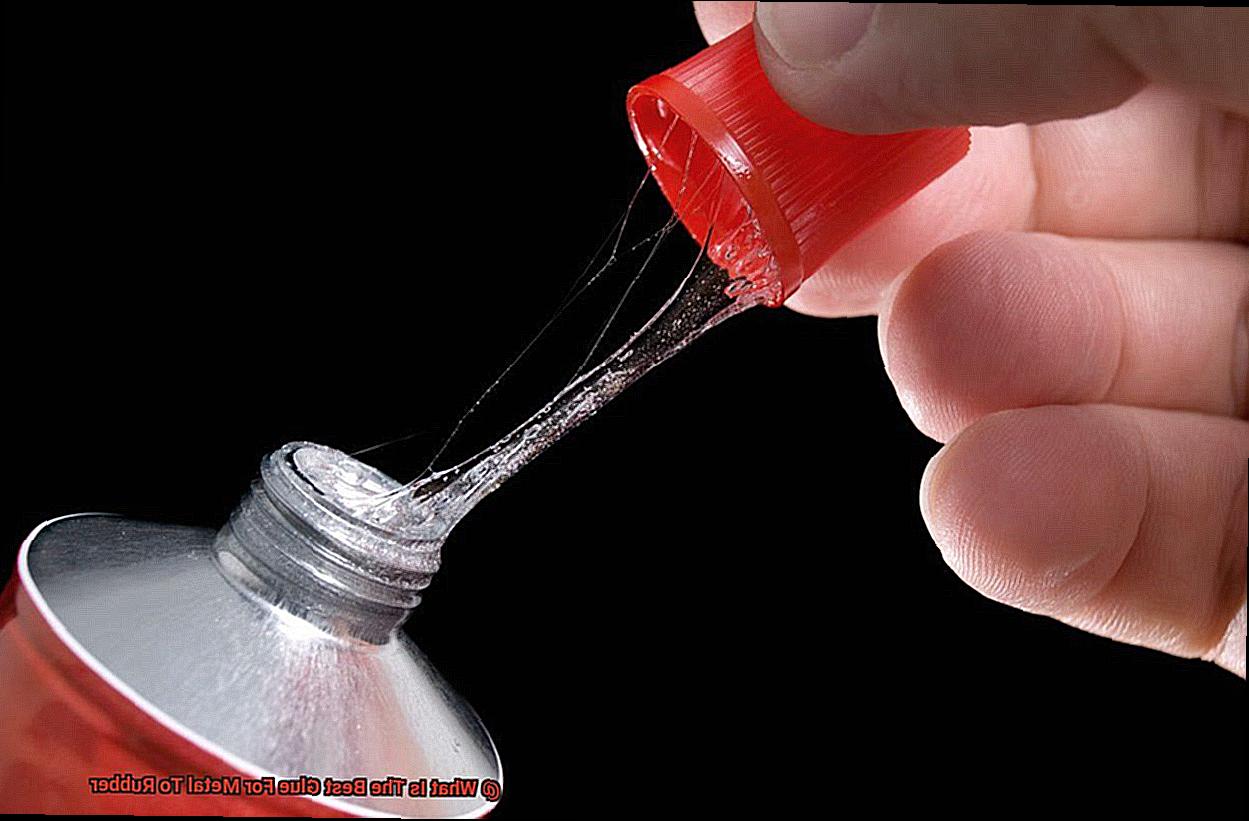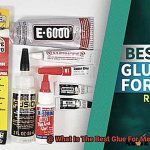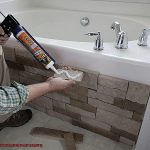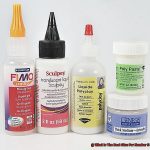Joining metal and rubber requires the perfect glue.
Whether you’re fixing your worn-out shoes or attaching a handle to a tool, you need a bond that won’t let you down. But with so many options out there, how do you find the right one?
Don’t worry. In this blog post, we’ll dive into the world of glues for metal to rubber, exploring the top contenders and helping you make an informed choice.
So if weak bonds and disappointment have got you down, keep reading to find the best glue for all your metal-to-rubber needs.
Types of Adhesives for Bonding Metal to Rubber
Contents
- 1 Types of Adhesives for Bonding Metal to Rubber
- 2 Epoxy Adhesives: Strength and Versatility
- 3 Cyanoacrylate Adhesives: Fast Curing Times and High Bond Strength
- 4 Factors to Consider When Selecting an Adhesive
- 5 Surface Preparation for a Successful Bond
- 6 Primers and Surface Activators
- 7 Temperature Resistance, Flexibility, and Gap-Filling Capabilities
- 8 Manufacturer’s Instructions and Test Samples
- 9 Conclusion
The bond between metal and rubber is critical in numerous applications, and choosing the right adhesive is essential for a strong and durable connection. With a range of options available, understanding the different types of adhesives and their properties is crucial. In this article, we will delve into the various adhesives commonly used for bonding metal to rubber, providing insights into their unique characteristics and applications. By considering these factors, you can select the perfect adhesive for your specific needs.
Epoxy Adhesives:
Known for their exceptional strength and versatility, epoxy adhesives offer excellent resistance to heat, chemicals, and moisture. These adhesives are well-suited for industrial applications, providing a durable and long-lasting bond. Whether you need to bond metal pipes or rubber gaskets, epoxy adhesives ensure a reliable connection that withstands harsh conditions.
Silicone Adhesives:
For flexibility and temperature resistance, silicone adhesives are an ideal choice. They can endure extreme temperatures and possess excellent adhesive properties for bonding metal and rubber surfaces. Silicone adhesives are widely used in electronics due to their exceptional electrical insulation properties, making them an excellent option for various applications.
Polyurethane Adhesives:
Combining strength with flexibility, polyurethane adhesives are suitable for diverse applications. They exhibit resistance to impact, abrasion, and chemicals, making them popular in the automotive industry for bonding metal parts to rubber components. With polyurethane adhesives, you can achieve a robust bond that can withstand demanding conditions.
Cyanoacrylate Adhesives:
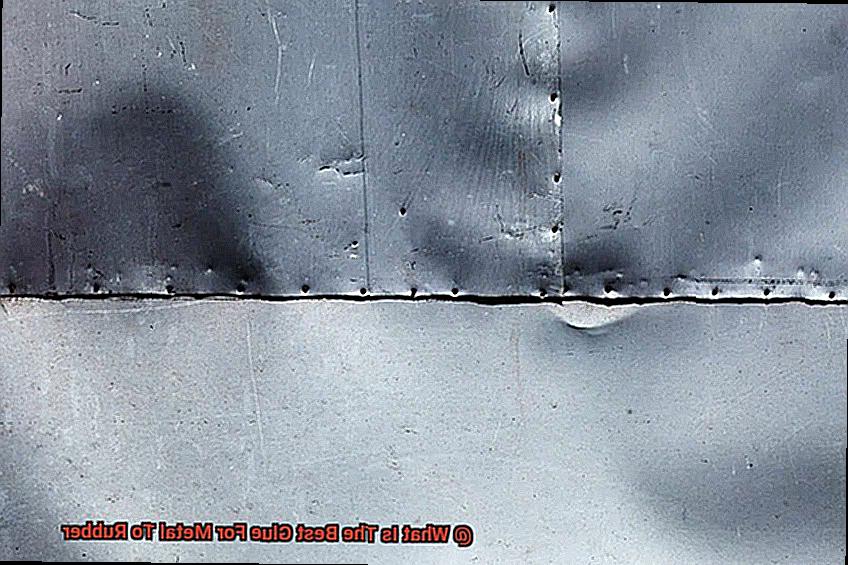
When it comes to quick repairs or small projects, cyanoacrylate adhesives, also known as super glue, are perfect. They instantly create a strong bond between metal and rubber surfaces, thanks to their fast setting time. However, it’s important to note that they may lack the desired flexibility for certain applications.
Contact Adhesives:
Contact adhesives offer an immediate bond upon contact with metal and rubber surfaces. Available in liquid or spray form, they are commonly used in construction for bonding metal trim to rubber seals. Contact adhesives provide a quick and reliable solution for various bonding needs.
Conclusion:
Selecting the right adhesive for bonding metal to rubber is crucial for achieving a successful and long-lasting bond. Consider factors such as the specific materials being bonded, desired strength and flexibility, and application conditions. Consulting with adhesive experts and following proper surface preparation techniques will ensure the best results.
Epoxy Adhesives: Strength and Versatility
When it comes to bonding metal to rubber, epoxy adhesives reign supreme in the world of glues. With their exceptional strength and unparalleled versatility, these remarkable adhesives have become the go-to choice for a wide range of applications. Let’s dive into the advantages of epoxy adhesives and explore how they can revolutionize your bonding projects.
Unmatched Strength:
Epoxy adhesives are renowned for their bonding prowess, creating a robust and unyielding bond between metal and rubber surfaces. When it comes to heavy-duty applications or situations where a secure and long-lasting bond is essential, epoxy adhesives never disappoint. With every bond formed, they provide peace of mind, knowing that your surfaces will remain intact even under the most extreme stress.
Resistance to Heat, Chemicals, and Environmental Factors:
No matter the temperature or conditions, epoxy adhesives stand strong. They withstand high temperatures with ease, making them ideal for applications involving heat or extreme environments. Furthermore, these adhesives are resistant to chemicals such as oils, solvents, and acids, ensuring that the bond remains unbreakable even in the harshest surroundings. With epoxy adhesives, the longevity of your bonded metal and rubber components is guaranteed, regardless of the challenges they may face.
Flexibility to Accommodate Different Materials:
Epoxy adhesives possess a unique flexibility that allows them to accommodate the different expansion and contraction rates of metal and rubber materials. This flexibility prevents the bond from weakening or breaking due to thermal or mechanical stress. Moreover, epoxy adhesives have the remarkable ability to absorb vibrations and shocks, making them suitable for applications involving movement or impact. With this adaptability, epoxy adhesives ensure that your bonded surfaces stay strong and secure in any situation.

Versatile Application Methods:
Epoxy adhesives come in various forms, such as liquids, pastes, films, or putties. This versatility allows for easy application and adaptability to different bonding requirements. Whether you choose to apply the adhesive with a brush, roller, syringe, or simply spread it onto the surfaces to be bonded, epoxy adhesives provide convenience and reliability in every application.
Remember: Surface Preparation is Key.
Before applying epoxy adhesive, proper surface preparation is crucial. Ensure that both the metal and rubber surfaces are clean, dry, and free from contaminants like oil, grease, or dust. This step maximizes adhesion and enhances overall bond strength, ensuring optimal results.
Cyanoacrylate Adhesives: Fast Curing Times and High Bond Strength
Imagine a project that requires bonding metal to rubber. You need a glue that can work quickly and effectively, without compromising on strength. Look no further. Cyanoacrylate adhesives, also known as super glue, are here to save the day. In this blog post, we will explore why cyanoacrylate adhesives are the ultimate choice for bonding metal to rubber, thanks to their lightning-fast curing times and Herculean bond strength.
Lightning-Fast Curing Times:
Cyanoacrylate adhesives are like the Flash of the adhesive world. They cure at the speed of light. When exposed to moisture in the air, these adhesives undergo a rapid chemical reaction, hardening in seconds or minutes. No more waiting around for hours for the glue to set. With cyanoacrylate adhesives, you can save time and complete your project in a flash.
Unbeatable Bond Strength:
If there’s one thing we can count on cyanoacrylate adhesives for, it’s their unbeatable bond strength. These adhesives form a robust and durable bond between metal and rubber surfaces, ensuring your joined parts stay securely in place. Whether it’s temperature changes, moisture, or vibrations, cyanoacrylate adhesives can withstand it all. Trust that your metal and rubber components will stay bonded through thick and thin.
The Chemistry Behind the Strength:
The secret behind cyanoacrylate adhesives’ exceptional bond strength lies in their unique chemical composition. These adhesives contain a cyano group (-CN) that reacts with the hydroxyl groups (-OH) present on metal and rubber surfaces. This reaction forms ester linkages, incredibly strong chemical bonds. It’s like having a superhero team-up between the glue and the surfaces it’s bonding.
Excellent Adhesion:
Cyanoacrylate adhesives have the ability to penetrate into the microstructure of metal and rubber surfaces, creating a mechanical interlock that enhances the overall strength of the bond. This means they can bond different types of metals, such as steel or aluminum, to various rubber materials like neoprene or silicone. It’s like cyanoacrylate adhesives have a sixth sense for compatibility.
Factors to Consider When Selecting an Adhesive
When selecting an adhesive for bonding metal to rubber, several factors should be considered to ensure a strong and durable bond. Here are the key factors to keep in mind:
- Compatibility: Choose an adhesive specifically designed for bonding metal and rubber together. Using the wrong adhesive can result in weak or failed bonds, so ensure compatibility with both surfaces.
- Strength: Consider the strength requirements of your application. Depending on the forces the bond will face, you may need a high-strength adhesive to ensure durability and longevity.
- Flexibility: Rubber materials have inherent flexibility and elasticity. Select an adhesive that can accommodate this without compromising the bond’s integrity. Look for an adhesive that can handle movement and expansion without weakening or failing.
- Temperature resistance: Determine the temperature conditions your bonded materials will face. Choose an adhesive that can withstand the temperature range without losing its bonding properties. Make sure it can handle both high and low temperatures if applicable.
- Chemical resistance: If your bonded metal and rubber will come into contact with chemicals or fluids, select an adhesive with good chemical resistance. This will prevent the bond from breaking down or weakening when exposed to certain substances.
- Cure time: Consider the cure time of the adhesive, which is the time it takes for it to reach full bonding strength. Depending on your project timeline, you may need an adhesive with a fast cure time or one that allows for longer assembly and adjustment times.
- Application method: Take into account the available resources and expertise for applying the adhesive. Some adhesives require specialized equipment or techniques, while others can be applied with simple methods like a brush or squeeze tube.
Surface Preparation for a Successful Bond
Creating a strong and enduring bond between metal and rubber requires meticulous surface preparation. In this article, we will take you through the essential steps of surface preparation to ensure that your adhesive adventure culminates in a successful bond.
Step 1: Clean the surfaces
Begin by giving both the metal and rubber surfaces a thorough cleaning using an appropriate cleaning agent. This step eliminates all traces of dirt, dust, grease, or contaminants that could impede adhesion. A pristine surface forms the foundation for a robust bond.
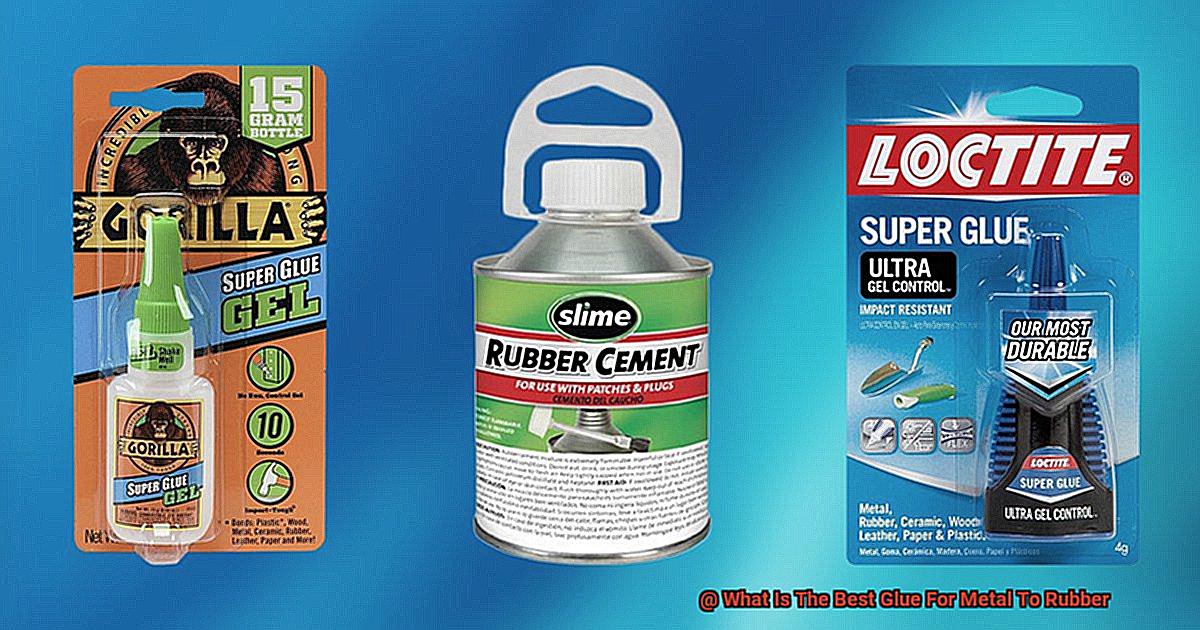
Step 2: Remove rust or corrosion
Should the metal surface exhibit any rust or corrosion, it must be eradicated entirely before bonding. Employ sandpaper, wire brushes, or chemical rust removers to obliterate all signs of decay. Afterward, clean the surface once more to eliminate any residual remnants.
Step 3: Roughen the surfaces
Enhance adhesion by roughening both the metal and rubber surfaces with sandpaper or abrasive pads. This technique imparts a slightly coarse texture that amplifies the bonding area for the glue.
Step 4: Degrease the surfaces
Even seemingly spotless surfaces can harbor invisible traces of oil or grease that compromise bonding. Neutralize this threat by degreasing both metal and rubber surfaces with an appropriate solvent or degreaser. Abide by the manufacturer’s instructions and allow ample drying time.
Step 5: Apply a primer (if necessary)
In certain cases, applying a primer may be imperative to optimize adhesion. Consult the adhesive manufacturer’s recommendations to ascertain if a primer is required and which type is most suitable for your materials.
Step 6: Test compatibility
Before applying glue to the entire surface, perform a compatibility test on a small area. Apply a minute quantity of adhesive and observe its curing process in accordance with the manufacturer’s guidelines. Assess the bond’s strength and ensure no damage or discoloration occurs.
Primers and Surface Activators
Primers and surface activators are essential components in the world of adhesive bonding, especially when it comes to joining metal and rubber. These magical products act as matchmakers, bringing two materials together in perfect harmony. But what exactly do they do?
Primers are liquid substances that work their magic by creating a chemical reaction on the metal and rubber surfaces before gluing. They enhance adhesion, boost bond strength, and eliminate any pesky contaminants or oxidized layers that could ruin the party. Think of primers as the secret sauce that ensures a strong and durable bond.
Surface activators, on the other hand, are like the superheroes of bonding. They swoop in to increase the surface energy of the materials, making them more receptive to adhesives. They also come to the rescue by removing any residual oils, grease, or dirt that could sabotage the mission.
Now, not all adhesive systems require primers or surface activators for metal to rubber bonding. Some adhesives are formulated to be super strong without any extra help. However, when you need that extra oomph or when dealing with tricky materials, primers and surface activators can save the day.
But choosing the right primer or activator is crucial for success. You want to make sure it’s compatible with both the adhesive and the materials you’re working with. This way, you’ll achieve optimal adhesion and a bond that can withstand even the toughest challenges.
Temperature Resistance, Flexibility, and Gap-Filling Capabilities
When it comes to gluing metal to rubber, you can’t just use any old glue and hope for the best. There are three key factors that you need to consider: temperature resistance, flexibility, and gap-filling capabilities. These factors will determine whether your bond will stand the test of time or crumble under pressure.
First, let’s talk about temperature resistance. Imagine bonding metal and rubber together, only to have the glue lose its grip or even melt when things heat up. That would be a disaster. To avoid this nightmare scenario, you need to choose a glue that can handle the heat without breaking a sweat. Look for an adhesive that is specifically designed to withstand high temperatures, so your bond remains strong no matter how hot things get.
Now let’s dive into flexibility. Metal and rubber have different levels of give and take, so you need a glue that can handle their differences. If you use a rigid adhesive, the bond could snap like a twig when the materials naturally move and flex. That’s why it’s crucial to choose a flexible adhesive that can gracefully accommodate the twists and turns of both metal and rubber. This way, your bond will stay intact even as the materials bend and stretch.
Last but not least, let’s explore gap-filling capabilities. Sometimes, there are little gaps or uneven surfaces between the metal and rubber that need to be filled during the bonding process. If your glue can’t fill these gaps effectively, you’ll end up with weak spots in your bond that could compromise its strength. That’s why it’s essential to choose a glue that has excellent gap-filling properties. This way, you can ensure a solid and secure bond, even if there are slight imperfections in the surfaces you’re working with.
Manufacturer’s Instructions and Test Samples
Look no further. In this blog post, we will delve into the world of manufacturer’s instructions and test samples. These two powerful tools hold the key to creating a bond that can withstand the test of time. So, let’s jump right in and unlock the potential of your adhesive.
Manufacturer’s Instructions – Your Glue Bible:
Think of the manufacturer’s instructions as your adhesive bible, guiding you towards bonding success. These instructions are meticulously crafted by the glue experts who understand the unique properties of their product and how it interacts with different surfaces. By following these instructions to the letter, you can ensure that you are using the adhesive effectively, maximizing its performance, and achieving optimal results.
Application Techniques and Curing Times:
Within those sacred pages of the manufacturer’s instructions lie invaluable insights into recommended application techniques for bonding metal to rubber. These golden nuggets may enlighten you on using just the right amount of glue, employing specific surface preparation methods, or even enlightening you about the crucial curing time required for a bond that can withstand anything life throws at it. Neglecting these guidelines could result in a feeble bond that leaves you stuck in a sticky situation. So, remember: read, absorb, and apply.
Test Samples – Peeking into Bonding Success:
Now that you’ve embraced the wisdom of the manufacturer’s instructions, it’s time to roll up your sleeves and get hands-on with some test samples. These little experiments are like glimpses into the future, revealing whether your chosen adhesive is up to the task before committing to your main project.
Selecting Sample Materials:
Carefully choose small pieces of metal and rubber that mirror what you plan to bond together in your grand project. By doing so, you create a microcosm of your final bond, allowing you to gauge the adhesive’s true potential in your specific application.
Applying the Glue:
Follow the manufacturer’s instructions to the letter when applying the adhesive to your sample materials. Press those two pieces together with conviction, ensuring they become one. The secret ingredient here is patience – give your bond ample time to cure as recommended. Remember, greatness takes time.
Evaluating the Bond:
Once the recommended curing time has elapsed, it’s time to put your bond to the ultimate test. Attempt to separate the metal and rubber pieces, observing for even the slightest sign of weakness or detachment. A bond that stands strong against your efforts is a surefire indicator that you’ve stumbled upon a winner.
lyeAtycVs2Q” >
Also Read: How to Glue Rubber to Painted Metal?
Conclusion
In conclusion, when it comes to bonding metal to rubber, there are a few standout glues that consistently perform well.
One such glue is the epoxy adhesive. Its strong and durable bond makes it an excellent choice for fixing metal components to rubber surfaces.
Another reliable option is the cyanoacrylate adhesive, commonly known as super glue. This fast-acting adhesive forms an instant bond and works effectively on both metal and rubber materials.
Additionally, if you’re looking for a more flexible bond, the polyurethane adhesive is worth considering. Its flexibility allows for movement between metal and rubber without compromising the strength of the bond.
It’s important to consider factors such as application method, drying time, and desired level of flexibility before making a decision.

